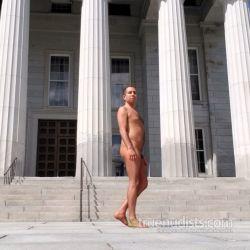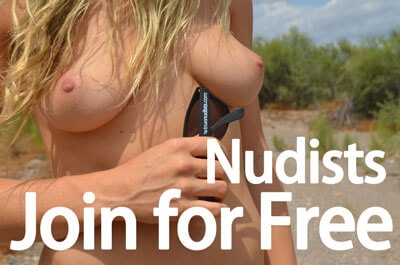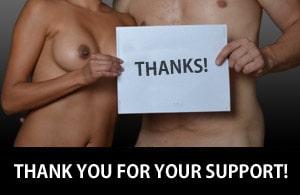Normalizing uncensored nudity vs TOS
I'm TheNaturistHiker on IG and I try not to censor my photos. I try different unedited, candid pictures to avoid triggering the algorithm while being true to who I am but that means I need to screen for followers who won't be offended to avoid being reported. The algorithm often fails to detect full nudity at the time of upload based on dappled light and shadow and your pose. Having IG take things down is a common bitter complaint but I don't want to put emoji or blurs over my body because that seems to perpetuate the body shame I'm trying to heal.
There are plenty of great, fully public, body-positive, pro-nudist accounts who have to touch up their photos to stay up and I don't begrudge them that, plus they're reaching more people with a good message. When it comes to accepting followers, I look for like-minded accounts with multiple mutuals. I usually follow back and try to encourage the people to share and participate.
LOL It sounds like you're taking some of the right precautions to avoid detection by "the algorithm". But, while various social media sites continue work to "improve" their algorithms, I don't think the algorithms are "smart" enough to actually detect nudity. In addition to flat out being reported by other users, the algorithms are most likely looking for other patterns to signal that a user might be posting nudity before it gets reviewed by a human. More important, the algorithms vary from site to site.
Twitter for example, does allow nudity but will mark some users' posts as "containing sensitive material" and blur it out so that you have to click a button to actually see the image. But I've noticed that some users have every single post marked as such while others have none of their posts flagged.
It's likely that the algorithm is looking at things like who the followers are that "like" the posts, whether or not their posts are frequently flagged, who their followers are and if their posts get flagged. Things like this likely go together to suggest that an individual's posts are guilty by association.
This is one reason why I pay attention to who I follow, who follows me, and who people in both cases follow.
In other cases, the algorithms simply recognize pictures that have been flagged before. A few years back a friend sent a picture to a group. At first glance it looks like jack-o-lantern. On closer inspection you see that it's two people having sex and the outlines of their bodies against and orange background light forms the face of the jack-o-lantern. But the picture was flagged, and my friend put into Facebook jail within seconds of posting it most likely because the picture had been flagged in the past.
Overall, while we may object to the TOS of various sites, it's probably efforts to consciously break the rules that urge the sites to be stricter about the rules and "improve" their algorithms to detect violations.




